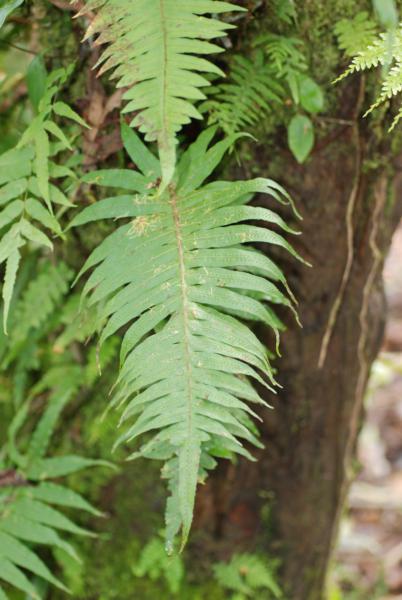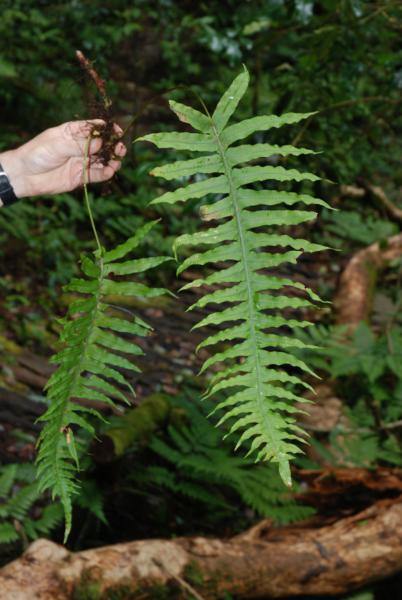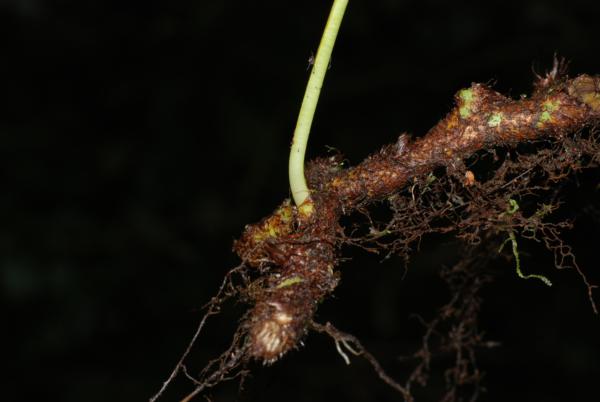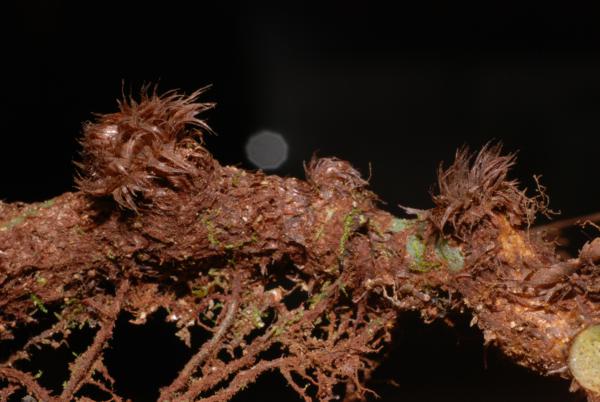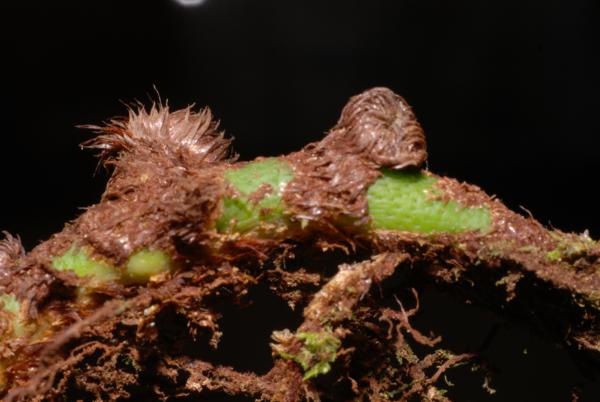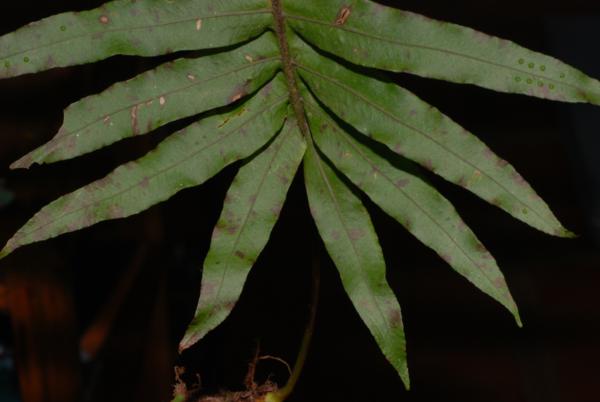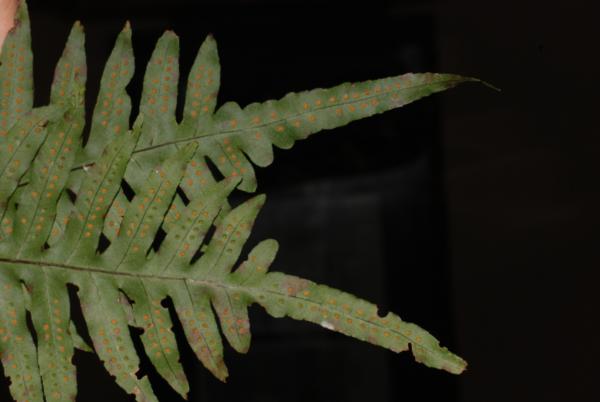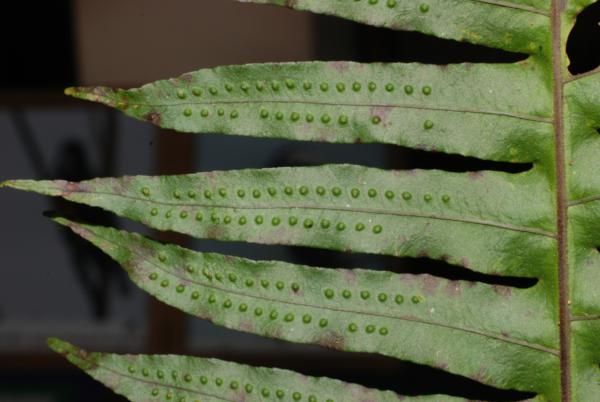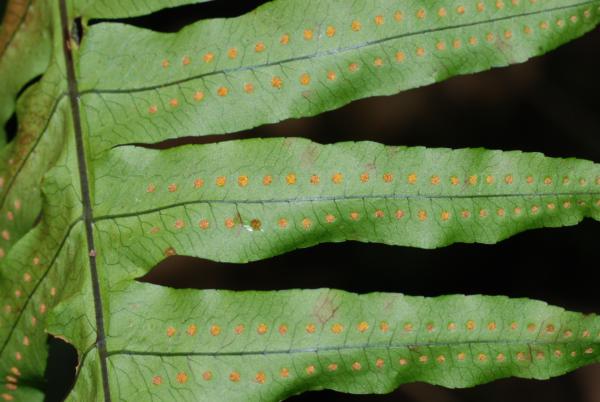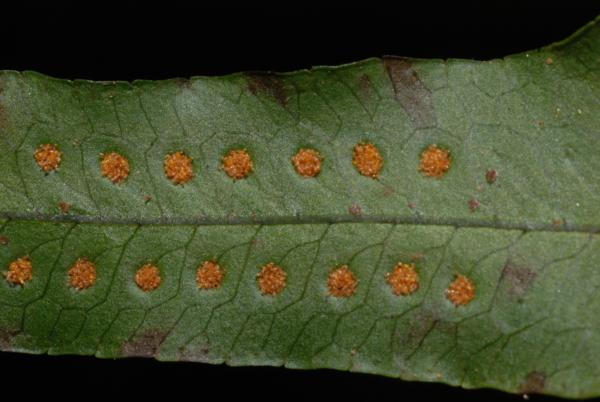
Goniophlebium amoenum (Wall. ex Mett.) Bedd.
Family
Polypodiaceae
Nomenclature
Goniophlebium amoenum (Wall. ex Mett.) Bedd., Ferns. Brit. India 1: 5, pl. 5. 1866; Bedd., Handb. Ferns Brit. India: 317, f. 170. 1883; Rödl-Linder, Blumea 34: 387. 1990; Boonkerd & Pollawatn, Pterid. Thailand: 270. 2000. – Polypodium amoenum Wall. ex Mett., Farngatt. Polypod.: 80. 1857; C.Chr., Contr. U.S. Natl. Herb. 26: 333. 1931; Ching, Contr. Inst. Bot. Natl. Acad. Peiping 2: 43. 1933; Tardieu & C.Chr; Fl. Indo-Chine 7(2): 536. 1941; Tagawa, J. Jap. Bot. 38: 325. 1963; Tagawa & K.Iwats., SouthE. Asian Stud. 5: 56. 1967; Tagawa & K.Iwats., Fl. Thailand 3: 569. 1989.
For further synonyms see Rödl-Linder, Blumea 34: 387. 1990.
Description
Rhizome long creeping, about 5 mm diam., dark brown, densely scaly throughout; scales narrow with ovate peltate base up to 5 by 2 mm, not so stiff, light brown to greyish, more or less clathrate. Stipes stramineous or faintly castaneous, 10–30 cm long, scaly at base, glabrescent upwards. Laminae somewhat variable in form and size, usually oblong to oblong-lanceolate, deeply pinnatifid with more or less distinct apical lobes, smaller ones subdeltoid, up to 50 by about 25 cm; rachis stramineous to castaneous, usually minutely scaly beneath or sometimes hairy; lobes up to 25 pairs, a few basal pairs a little shorter than the next above, deflexed, middle and lower ones patent, straight or slightly falcate, linear-lanceolate, acuminate at apex, up to 15 by 1.7 cm, continuous to the next ones by narrow wings of rachis more than 2 mm in breadth; costa more or less hairy on upper surface; veins forming a row of costal areoles or rarely an additional row, visible on both surfaces; papyraceous to subcoriaceous. Sori terminal on included veinlets in costal areoles, thus in a single row at each side of costa, about 1 mm diam., superficial or slightly sunken .
Distribution in Thailand
NORTHERN: Chiang Mai, Phitsanulok; NORTH-EASTERN: Loei; SOUTH-EASTERN: Chanthaburi.
Distribution in Laos
Hua Phan.
Wider Distribution
Himalayas to Burma, S China, Indochina and Taiwan.
Ecology
On mossy tree trunks or on moist mossy, rocks in dense evergreen forests, fairly common at high altitudes (1400–2300 m).
Proposed IUCN Conservation Assessment
Least Concern (LC). This species is widespread and not under any known threat.
Notes
Note.– In form and size of the fronds, this is a species fairly variable. In deep gloomy places, the fronds become larger and thinner, usually green in colour.
Voucher specimens - Thailand
Middleton et al. 4499 & 4882, Chiang Mai, Doi Inthanon National Park (E); Middleton et al. 5054, Chiang Mai, Doi Pha Hom Pok National Park (E).
Habit
Whole plant
Rhizome and stipe base
Rhizome
Rhizome with some scales removed
Reflexed lower pinnae
Frond apex
Frond upper surface
Frond lower surface
Sori
Site hosted by the Royal Botanic Garden Edinburgh. Content managed by Stuart Lindsay, Gardens by the Bay, Singapore and David Middleton, Singapore Botanic Gardens. Last updated 24 January 2012
